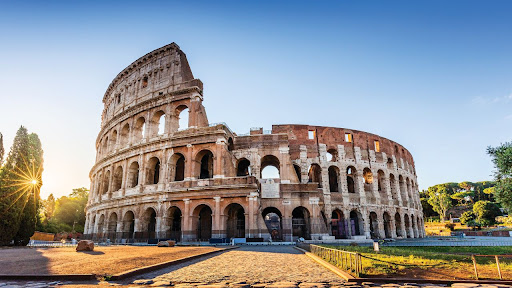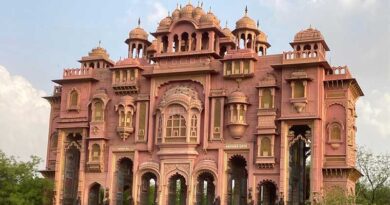From Renaissance To Modernity: Italy’s Artistic Evolution
Italy has long been regarded as the cradle of Western civilization, and its rich artistic heritage has played a significant role in shaping the cultural landscape of the world. The journey of Italy’s artistic evolution, spanning several centuries, can be traced from the glorious Renaissance period to the transformative era of Modernity.
This article explores the key milestones in Italy’s artistic history, highlighting the remarkable changes and innovations that have emerged along the way.
I. The Renaissance: A Golden Age Of Artistic Expression
The Renaissance, which flourished in Italy from the 14th to the 17th century, marked a period of unprecedented artistic achievement and intellectual growth. During this time, artists embraced humanism and sought to revive the classical ideals of ancient Greece and Rome.
Italy became a hub of artistic innovation, with prominent figures such as Leonardo da Vinci, Michelangelo Buonarroti, and Raphael producing iconic masterpieces.
A. The Birth Of Perspective And Realism
One of the defining features of the Renaissance was the development of linear perspective, a technique that created a sense of depth and three-dimensionality in paintings. Filippo Brunelleschi’s experiments with perspective in architecture paved the way for artists to incorporate this principle into their works.
Paintings like Leonardo da Vinci’s “The Last Supper” and Raphael’s “School of Athens” exemplify the meticulous attention to detail and realistic representation that became characteristic of Renaissance art.
Eep all your documents organized before in person interview as it will maimise success ratio of your visa application. Those documents include passport, photographs, proof of accommodation, flight itinerary and cover letter.
B. Humanism And Idealized Beauty
Humanism, a philosophical movement that emphasized the value of human potential and achievement, greatly influenced Renaissance art. Artists sought to depict the human form with grace, proportion, and idealized beauty. This can be seen in Michelangelo’s iconic sculpture, “David,” which captures the perfect harmony of the human physique.
II. Baroque: Drama And Emotional Intensity
Following the Renaissance, Italy experienced a shift in artistic style with the emergence of the Baroque period in the 17th century. Baroque art was characterized by dramatic compositions, rich colors, and a strong emphasis on emotional intensity. Artists like Caravaggio and Gian Lorenzo Bernini pushed the boundaries of artistic expression, creating powerful and evocative works.
A. Caravaggio And The Tenebrism Technique
Caravaggio, known for his innovative use of light and shadow, employed a technique called tenebrism to create a stark contrast between light and darkness in his paintings. This technique heightened the dramatic effect and added a sense of theatricality to his works, as seen in “The Calling of St. Matthew” and “The Conversion of St. Paul.”
B. Bernini And The Sculptural Dynamism
Gian Lorenzo Bernini, a prolific sculptor and architect, revolutionized the concept of sculpture during the Baroque era. His works, such as the breathtaking sculpture of “Apollo and Daphne” and the grandiose “Baldacchino” in St. Peter’s Basilica, showcased a sense of dynamism and movement that seemed to defy the limitations of stone.
III. Neoclassicism: Reviving The Past
As the 18th century dawned, a new artistic movement called Neoclassicism emerged in Italy. Neoclassical artists sought inspiration from ancient Greek and Roman art, rejecting the ornate and grandiose style of the Baroque. This period was marked by a return to classical ideals and a focus on simplicity, clarity, and order.
A. Antonio Canova And The Idealized Beauty
Antonio Canova, an Italian sculptor, became one of the most prominent figures of Neoclassicism. His sculptures, such as “Psyche Revived by Cupid’s Kiss” and “Napoleon as Mars the Peacemaker,” demonstrated a refined sense of idealized beauty and classical harmony.
B. The Influence Of Pompeii And Herculaneum
The excavation of the ancient Roman cities of Pompeii and Herculaneum in the mid-18th century had a profound impact on Neoclassical art. The discovery of well-preserved artifacts and frescoes inspired artists to incorporate classical motifs and themes into their works, fostering a renewed interest in the art of antiquity.
IV. Modernity: Breaking Tradition
The advent of the 19th century brought significant changes to the artistic landscape of Italy. Artists began to question traditional artistic conventions and sought new ways of expressing themselves. Italy played a crucial role in the development of various artistic movements, such as Romanticism, Realism, and the avant-garde.
Related: Personal Interview Requirement For Schengen Visa
A. The Romantic Spirit Of Freedom
Italian artists embraced the Romantic spirit of individualism, emotion, and the sublime. Painters like Francesco Hayez captured the patriotic fervor and struggle for independence in works like “The Kiss” and “The Vespers of 1822.” Meanwhile, Giovanni Fattori and the Macchiaioli movement explored the natural landscape and everyday life in a realist manner.
B. Futurism And The Avant-Garde
In the early 20th century, Italy witnessed the birth of Futurism, an avant-garde movement that celebrated the dynamism of modern life and technology. Led by Filippo Tommaso Marinetti, Futurist artists rejected traditional artistic forms and embraced new mediums, such as photography and sculpture.
Umberto Boccioni’s “Unique Forms of Continuity in Space” and Giacomo Balla’s “Dynamism of a Dog on a Leash” exemplify the movement’s fascination with movement and speed.
Always go for advance reservation of flight for visa. You can check online services offered by many companies. But before availing any company services. Do not forget to check the reviews and eperiences of the previous clients. Representatives at the embassy ask for flight itinerary as it shows your travel dates and your duration of stay.
Conclusion
Italy’s artistic evolution from the Renaissance to Modernity is a testament to the country’s rich cultural heritage and its influence on the global art scene. The Renaissance laid the foundation for artistic expression, exploring themes of humanism, perspective, and idealized beauty. The Baroque period introduced drama and emotional intensity, while Neoclassicism revived the aesthetics of ancient Greece and Rome.
More Related: Top Places To Visit In Slovakia
Finally, the advent of Modernity shattered artistic traditions, leading to the emergence of various movements that redefined art in the 19th and 20th centuries. Italy continues to inspire and captivate artists and art enthusiasts worldwide, cementing its place as a timeless hub of artistic innovation.




